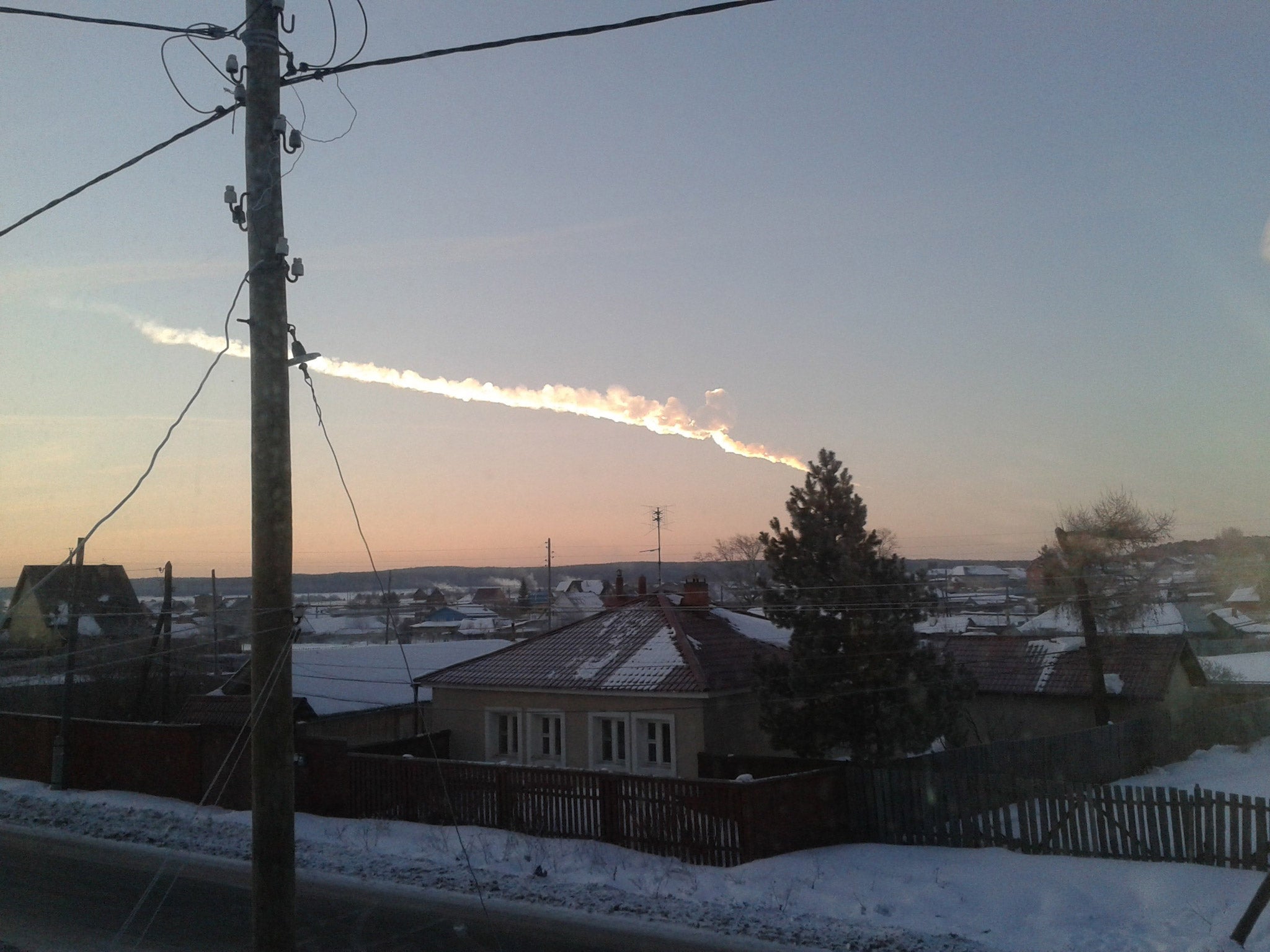Sun-powered space lasers, gravity tractor beams, or a nuclear device - how to stop asteroids and meteors from hitting the earth
After the week in which an asteroid passed a mere 17,000 miles from the earth, and a meteor injured over a thousand people in Russia one scientist warns 'duck and cover' is not an option

Your support helps us to tell the story
From reproductive rights to climate change to Big Tech, The Independent is on the ground when the story is developing. Whether it's investigating the financials of Elon Musk's pro-Trump PAC or producing our latest documentary, 'The A Word', which shines a light on the American women fighting for reproductive rights, we know how important it is to parse out the facts from the messaging.
At such a critical moment in US history, we need reporters on the ground. Your donation allows us to keep sending journalists to speak to both sides of the story.
The Independent is trusted by Americans across the entire political spectrum. And unlike many other quality news outlets, we choose not to lock Americans out of our reporting and analysis with paywalls. We believe quality journalism should be available to everyone, paid for by those who can afford it.
Your support makes all the difference.It may seem like the stuff of science-fiction disaster movies, but the week after a meteor explosion injured over a thousand people in Russia, and an asteroid half the size of a football field passed a mere 17,000 miles from the earth, experts are seriously considering how to deflect or destroy meteorites or asteroids set on a collision course with our planet.
The ideas range from the outlandish to barely plausible, but no single idea - as Russia discovered to its cost this week, appears to provide all the answers.
"We must create a system to detect objects that threaten Earth and neutralise them," Dmitry Rogozin, a first deputy prime minister in charge of the defence industry, wrote on Twitter.
For all their nuclear missiles, he said that neither the United States nor Russia could shoot down such meteors.
Even President Vladimir Putin held up his hands, saying no country was able to protect against such events.
Researchers have suggested that lasers powered by the sun could protect the earth from asteroids by destroying them before they get too close.
Academics from the University of California, Santa Barbara, and California Polytechnic State University, San Luis Obispo, have outlined a plan for solar powered space defences, which could vaporise an asteroid as big as the one which flew past Earth on Friday night in 60 minutes.
Researchers Philip M Lubin from the University of California, Santa Barbara and Gary B Hughes from California Polytechnic State University have proposed a DE-STAR project, or Directed Energy Solar Targeting of Asteroids an exploration, as a realistic means of destroying potential threats posed to the Earth by asteroids and comets.
"We have to come to grips with discussing these issues in a logical and rational way," Lubin said in a statement the day before the Russian meteor explosion.
"We need to be proactive rather than reactive in dealing with threats. Duck and cover is not an option," Lubin added. "We can actually do something about it, and it's credible to do something.
So let's begin along this path. Let's start small and work our way up. There is no need to break the bank to start."
Gary B Hughes who worked on the system with Lubin said: "This system is not some far-out idea from Star Trek."
"All the components of this system pretty much exist today. Maybe not quite at the scale that we'd need - scaling up would be the challenge - but the basic elements are all there and ready to go."
The European Union-funded NEO Shield consortium, whose aim is to investigate the best ways to deal with an object hurtling towards Earth, has also outlined some of its ideas in Vienna.
One suggestion is to use a kinetic "impactor" - which would involve firing a huge spacecraft into an asteroid to alter its path.
Another suggestion is to use a "gravity tractor" by parking a big spacecraft near an object and using thrusters to lead it away by using the weak gravitational force as a cosmic tow-rope.
The use of a nuclear weapon on or near an asteroid would be a last resort, the consortium has said.
Key to any of the methods suggested is the need for an early warning detection system.
A University of Hawaii team of astronomers is also developing a system with small telescopes called ATLAS that would identify dangerous asteroids before their final plunge to Earth.
The team predicts the system will offer a one-week warning for a 50-yard (45-metre) diameter asteroid known as a "city killer" and three weeks for a 150 yard (137 metre)-diameter "county killer."
"That's enough time to evacuate the area of people, take measures to protect buildings and other infrastructure, and be alert to a tsunami danger generated by ocean impacts," said astronomer John Tonry.
Russian experts have, so far, been reluctant to invest in an early warning system as such events are considered so rare.
The last meteorite strike on such a scale in Russia was reported in 1908. One Russian expert estimated the cost of such a system would be $2 billion.
Join our commenting forum
Join thought-provoking conversations, follow other Independent readers and see their replies
Comments